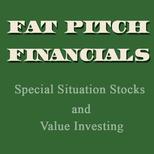 Author: George Silva, Fat Pitch Financials
Author: George Silva, Fat Pitch Financials
Covestor model: Workouts
Looking back, 2011 was a difficult year for workout opportunities. The spread on risk arbitrage opportunities seemed to shrink over the year. Tender offer opportunities became scarce. Nevertheless, the Workouts model adjusted to the changing environment and had a successful year. For 2011, the model was up 9.54% vs. the S&P 500’s flat performance and the benchmark Dow Jones Global Index’s decline of 9.91%.
Looking forward, 2012 looks to be equally as challenging given the dearth of mergers, tender offers and other corporate events. However, if the economy truly starts to recover, there remains a lot of cash on corporate balance sheets. If those cash hordes are deployed, many opportunities may quickly open up for the Workouts model.
Given that 2012 is an election year, we expect to see a bit more drama this year. With added political drama, there will likely be a bit more market volatility. Market volatility is not necessarily a bad thing for the Workouts model. It just means that a bit more cash needs to be available to quickly take advantage of short term price fluctuations in order to snatch up temporary bargains in stocks with pending deals.
It is still difficult to determine whether or not a a true economic recovery will happen in 2012. The current government administration will try its best to make that happen, but the housing market will continue to be a drag on household wealth and consumer demand. The likelihood of deflation is declining, while the potential for inflation is climbing. We expect inflation will remain moderate, but if it climbs quickly it will impact the real returns of the Workouts model since this model focuses on fixed price cash deals that often take months to complete.
The Workouts model will continue being competitive by focusing on special situations without relying on margin to boost returns. Avoiding margin helps to minimize our risk and boost investing discipline. With our small size, we can nimbly trade into small opportunities, avoid formulaic decision rules, and think independently.




